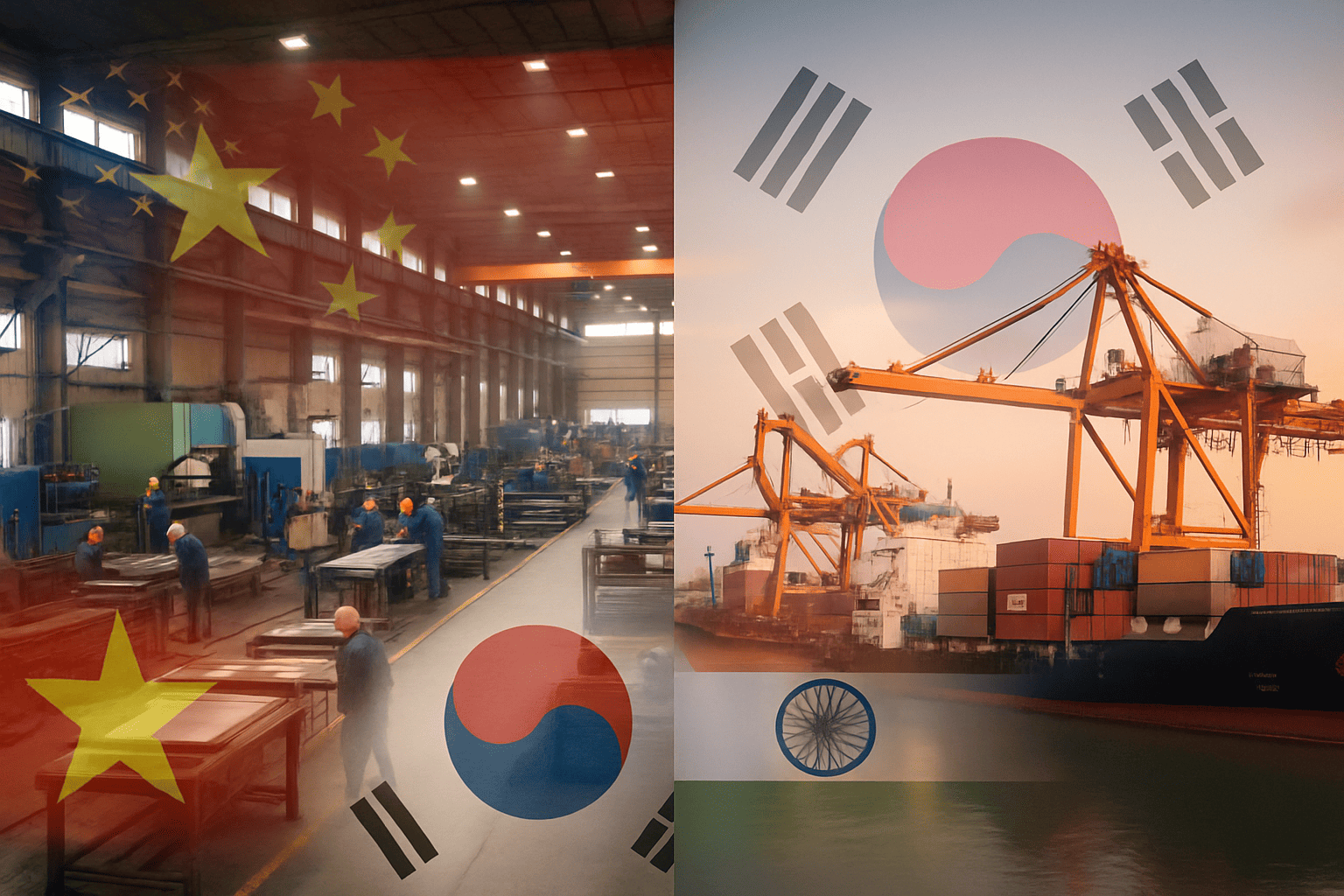Asia's Factories Falter as US Tariffs Sap Orders in October
By Tredu.com • 11/3/2025
Tredu

The picture in October
Asia’s factories falter as US tariffs sap orders in October, according to purchasing manager surveys that show weaker new export bookings across several hubs. The lens for this report, Asia Factories Falter as US Tariffs Sap Orders for Tredu, is the flow of orders and the tone of forward indicators. Managers describe thinner pipelines to the United States, more frequent price renegotiations, and tighter controls on working capital. Inventories are lean, hiring is selective, and discretionary investment is on hold while firms watch holiday shipments and early fourth quarter reorders.
China slows as export pipelines thin
Chinese manufacturers reported softer external demand, with new export orders slipping and production plans trimmed to protect margins. Firms cited longer decision cycles among overseas customers and a greater share of small lot purchases. Input costs eased compared with midyear, yet energy and logistics still required careful scheduling. Companies shifted mix toward higher value lines where pricing held, and deferred overtime where backlogs allowed, a pattern consistent with a controlled slowdown rather than a sharp contraction.
South Korea contracts, electronics cautious
South Korea’s PMI moved below the 50 threshold as electronics and intermediate goods producers felt the tariff drag. Exporters noted that quotes to US clients now include wider delivery windows and split shipments to manage landed costs, which complicates plant utilization. Price pressures moderated only slightly, so managers leaned on productivity measures and selective discounts to sustain volumes. Suppliers reported shorter order visibility, which encourages smaller batch runs and just-in-time components.
India steadies on domestic demand
India remained comparatively resilient. Domestic consumption and project activity offset weaker external bookings, allowing factories to keep utilization near recent averages. Firms hired selectively for throughput roles, maintained order backlogs at manageable levels, and emphasized payment discipline. Export growth slowed, yet operating conditions were stable enough for cautious maintenance capex. The divergence from North Asia highlights the buffer provided by a large home market.
Southeast Asia mixed, supply chains still in flux
Across Southeast Asia the picture was uneven. Vietnam and Indonesia recorded gains in output and new orders, helped by diversified buyer bases and incremental supply-chain relocation. Malaysia and Taiwan were softer, citing slower technology demand and tariff uncertainty among US customers. Procurement teams prioritized second sources for critical inputs, which adds administrative complexity in the near term, but can improve resilience if new sites achieve scale and yields.
Prices, power and currency effects
Input prices moderated from midyear peaks, however electricity and fuel remained swing variables for importers. Where contracts passed through energy costs, margins were steadier; where they did not, firms trimmed nonessential spending and renegotiated freight. Currency moves offered only partial relief. Hedging reduced volatility but also capped potential gains from depreciation. Managers stressed inventory discipline, shorter purchasing cycles, and tighter credit terms for customers in at-risk markets.
What the PMIs signal for growth
Purchasing manager indices are diffusion measures around 50. A cluster near that line indicates stagnation rather than collapse. October readings imply a downshift led by export-heavy hubs, with forward-looking components such as new export orders and future output softening. Employment held broadly steady, a sign that companies expect stabilization rather than a steep slide. Supplier delivery times normalized, which reflects calmer logistics, but order pipelines remained the binding constraint.
Policy signals and corporate responses
Regional central banks appear inclined to stay patient while inflation remains contained. Fiscal tools are targeted, focusing on energy support, transport links, and incentives for advanced manufacturing. At the corporate level, guidance into year end centers on preserving cash, stretching component life cycles, and prioritizing orders with firmer pricing or better payment terms. Several multinationals are pacing model-year transitions, balancing working capital with demand risk and tariff exposure.
Trade contours and diversification
Tariffs have not triggered a wholesale rerouting of supply chains, yet they are accelerating incremental diversification. Producers are adding second-source options for key parts, shifting final assembly for selected SKUs, and localizing after-sales services closer to end markets. The immediate effect is higher compliance cost and longer qualification timelines. The intended benefit is greater resilience to policy shocks and smoother lead times once new facilities reach stable yields.
Market and earnings implications
Equity markets read the surveys as mildly negative for growth proxies in North Asia, neutral to positive where domestic demand is strong. Credit conditions remained orderly, supported by adequate liquidity and expectations that policy tightening is unlikely. Into the next reporting cycle, analysts will focus on order backlogs, pricing concessions, and capex deferrals. These datapoints will reveal whether factories can hold current run-rates while awaiting clearer signals from US buyers.
Bottom line
Asia factories are entering the final quarter with softer export pipelines to the United States, steady domestic demand in a few large markets, and a cautious posture on spending. The core theme holds, Asia’s factories falter as US tariffs sap orders in October, and stabilization depends on orders returning, energy costs staying manageable, and policy staying predictable.

How to Trade Like a Pro
Unlock the secrets of professional trading with our comprehensive guide. Discover proven strategies, risk management techniques, and market insights that will help you navigate the financial markets confidently and successfully.


